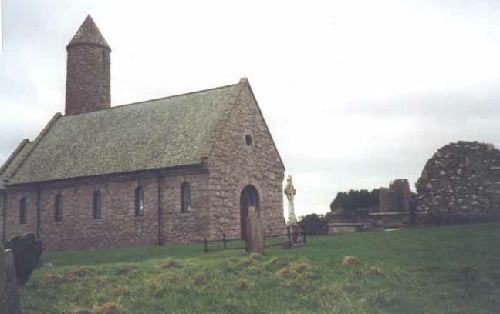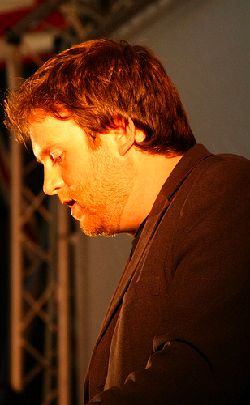 * Note: This post is so full of spoilers it’s almost ridiculous – so only read the first paragraph if you haven’t seen the film yet. It's also more of a personal review than I might otherwise write, mostly because 'Paris, Texas' has been resonating deeply with me since I first saw it about 15 years ago. And finally, the photo credit: some images below are courtesy of the fine folks at the Criterion Collection.
* Note: This post is so full of spoilers it’s almost ridiculous – so only read the first paragraph if you haven’t seen the film yet. It's also more of a personal review than I might otherwise write, mostly because 'Paris, Texas' has been resonating deeply with me since I first saw it about 15 years ago. And finally, the photo credit: some images below are courtesy of the fine folks at the Criterion Collection.
I used to think that Thomas Merton, that earthy paragon of real life mysticism, who left this world too soon, was too wise to have lived in the twentieth century. But then I saw his character pop up in Robert Redford’s excellent little horror film Quiz Show and realised my mistake – his was a profoundly modern spirituality, with the gift of connecting ancient truth claims with contemporary reality, just what we need in these troubled times. Merton says that no one can find true life ‘unless you have risked your mind in the desert’. There’s something about the truth of Sam Shepard’s writing in Paris, Texas, available now in a classy Criterion DVD and Blu-Ray edition that leads me to believe Shepard must be familiar with Merton, and not just because it’s about a man wandering in the kind of desert that has real sand and baking sun.
 Thomas Merton
Thomas Merton
This movie is about that most common of modern malaises (and my soapbox) – community breakdown, but before we get to that, let’s have a moment’s silence in honour of great opening title sequences…This one is red on black, and somehow fits right in with the burning drama of one man’s broken heart, and the starkness of what happens when people break faith with each other.
Whoever coined the phrase ‘the desert of the real’ (and I’m pretty sure Morpheus got it from someone else) may have stolen it from this movie, which opens with exceptionally beautiful shots of a lonely man appearing out of nowhere in a barren landscape, watched by a hawk. The metaphor is not strained, as we’re gradually made aware that this man is troubled by how deep the talons of his past have sunk into his soul.

He almost looks like a cartoon character – evocative of the Road Runner’s nemesis, Wile E Coyote (after a nervous breakdown), then when we see his face in close up, we realise that it’s Harry Dean Stanton and know that his story must be even worse than that poor animated wolf’s repeated inglorious end. It isn’t long before he’s on a hospital gurney, looking like Jesus. Wile E Coyote, Harry Dean Stanton, and Jesus – Wim Wenders’ Holy Trinity. Stanton’s character Travis is mute, unlike the guy in real life (especially if you go to see him play with his jazz combo in L.A.’s Mint night club on a Saturday night – the illustrious man has what I might generously call an ‘interesting’ sense of what singing is, but he certainly runs a tight band). His face is heart-breaking for the audience, and his character – when he looks in a mirror he has to run away; and I wonder if that experience is closer to home for more of us than would like to admit. Something BAD has happened to him, as he says – ‘A lot can happen to a man in four years. All kinds of trouble’. And his experience has made him different – his shoes are ‘one size bigger’, but that’s just the tip of his iceberg; we’re watching a dead man walking, trying to find out if he can ever go home, staring into the long distance, searching for ‘her’, or freedom from the past. Which, I suppose, is what all of us, to some degree, at some points in our lives, are looking for.

So, anyway, his brother comes to pick him up, showing both real grace (he’d rather have him confess to horrible misdeeds than to say nothing) and an aptitude for making Travis feel worse about himself (he has the perfect wife and work and wealth, while Travis has nothing but the past). In the early scenes between them, we see how brothers – whether biological or spiritual – can unwittingly bring both love, and a sense of competition. Travis joins his movie namesake on a journey inward, into his own heart of darkness. And we’re privileged to join him. We follow him to where he meets and bonds with the son who is too young to remember him, and we discover that Something Bad happened to break their relationship. It’s mysterious, but not a mystery film; it’s set in the west, but it’s not a western; it’s funny in places, but it’s not a comedy – Paris, Texas is well nigh uncategorisable, if indeed such a word exists.
We see that Travis owns a piece of land, but he says he can’t remember why he bought it. This made me think of how we sometimes get to the stage of forgetting why we did certain things that were important in the past, but not anymore, lost in the mists of time. Of course, buying fields is an honourable biblical activity, whether those that host pearls of great price, or hold the dead bodies of broken traitors. Maybe Sam Shepard was thinking of such plots of land when he wrote this. There’s something about land in the history of religion and identity that resonates with the deeper emotions of the human spirit, so it’s easy to understand how Travis’ plot gives him dignity, in spite of it being little more than a small patch of dust bowl. Aside from the land, we discover that Travis has also lost the love of his life, who – thanks be to God! – is played by Nastassja Kinski at her most realistically beautiful. The film paints the depth of their love by screening an old home movie, the camera dancing round them as they play on the beach with their son. This is one of the great cinematic scenes of what true love is really like – the audience may resonate with, or feel envious toward the way the characters touch each other’s faces and lips. The son says ‘Is that my mom?’, and Travis replies, ‘It’s not really her, it’s only her in a movie’, probably the most appropriate answer, for in a sense this scene, this film, is about the power of cinema to touch us. Travis and the boy travel to meet the mother, who is working in a kind of brothel for people who don’t touch each other. Travis talks to her through a screen, like a bank teller to a customer. A long scene ensues where Travis breaks our hearts with the story of their love and how it broke; he retells how their affair ended:
He just lay there in bed and listened to her scream…he didn’t feel anything anymore, all he wanted to do was sleep. He wished he were far away in a deep vast country where nobody knew him.
 The two lovers are relating through a screen, which is not unlike how this generation uses computers to relate – this reminds me that we need to take care that we don’t stop touching each other. Travis is letting her go by telling her of his love, but that he realises he cannot be an adequate father to their child; the regret for things past, and how dependent love can trap is palpable. They have to turn away from each other to communicate the deepest thoughts, and the scene is so uncomfortable that I wanted to turn away from the screen, too. And we, the audience, become so caught up in the story of their love that we want the closure of them ending up together – which I suppose represents our desire to forgive them both for their failures, for being too much like us, really.
The two lovers are relating through a screen, which is not unlike how this generation uses computers to relate – this reminds me that we need to take care that we don’t stop touching each other. Travis is letting her go by telling her of his love, but that he realises he cannot be an adequate father to their child; the regret for things past, and how dependent love can trap is palpable. They have to turn away from each other to communicate the deepest thoughts, and the scene is so uncomfortable that I wanted to turn away from the screen, too. And we, the audience, become so caught up in the story of their love that we want the closure of them ending up together – which I suppose represents our desire to forgive them both for their failures, for being too much like us, really.
There are so many riches in this film, from the evocation of fatherhood with a dad having fun with his kid by walking backwards down the street, to Ry Cooder’s music which is so good it should be allowed to speak for itself, to the drive in bank that somehow looks like a spaceship, to Robby Muller’s poetic use of colour (red for lifeblood, which eventually moves from the background to consuming everything at the moment of redemption), to the lifetime of pain that is etched onto Harry Dean Stanton’s face. As we travel along with Travis, the film provokes us to think about the injustice of the US healthcare system, how owing a little bit of land can grant dignity, and it manages to evoke how small-town America actually feels. This is not a film to escape into, but one that is more real than most about brokenness and suffering – just like family life. It speaks of the resurrection of a dormant soul, and is a good model of what I might call ‘holistic non-closure’; by which I mean it is honest about the loose ends that we often find ourselves with.

The strangest moment in Paris, Texas has Travis pass by a man on a bridge, shouting shibboleths at the interstate traffic below, like the war veterans we have all seen in urban USA: ‘There will be no safety zone’, rhymes his portent of doom, and Travis quickly passes by, perhaps so as not to be ‘infected’ by whatever demon has possessed this brother. But there is a look of recognition between them. Earlier, Travis tries to drive in the right direction after getting lost, and indicates the antidote to such meta-pessimism, and this may be Paris, Texas’ greatest gift to us, the somewhat broken, somewhat fixed, work-in-progress audience:
‘I don’t know where I turned off, it didn’t have a name…but I can find our way out again’
The prophet on the bridge may sound too close to home when he says ‘there will be no safety zone’; maybe that’s where you or I feel ourselves to be right now, or where we will be by the end of any particular day. We may not know where we turned off the road, but we can find our way out again. There is a safety zone for the broken. The film ends with mother and son reunited, and Travis bathed in a green light – almost like he’s going to be taken to space. It’s a fresh beginning, and he allows himself a satisfied smile – he has forgiven himself, done something right, and perhaps will again. Surely this is the meaning of redemption – not what we’ve done, but how we respond to it when we experience the grace of another chance? If so, Wenders and Sheperd’s film is worth our time and attention. It’s a slow journey, but it might just change your direction.

The Criterion Collection edition of ‘Paris, Texas’ features a very strong new transfer, which does full justice to the unusual colour scheme; there’s a genuinely fascinating and endearing audio commentary from Wenders, whose gravelly, meditative voice produces sounds like those of a happily mellowed philosopher, and is willing to make admissions of the kind ‘before ‘Paris, Texas’, I wasn’t all that confident as a storyteller, and all my films were too long’. Wenders says that the film’s imagery is rooted in ‘the overall effect of the American cinema worldwide’, but the interviews on the disc suggest it works both ways – this was a US-German co-production, and the use of German and French actors lends a degree of authenticity to the otherworldly story. A couple of interviews with Wenders and collaborators Allison Anders and Claire Denis make him appear to be the most magnanimous team player you could ever hope to work with; and a typically elegant booklet of essays. It’s a quietly beautiful edition of a magnificent film.
 Jeremie Renier, Juliette Binoche, and Charles Berling,
Jeremie Renier, Juliette Binoche, and Charles Berling, 



















